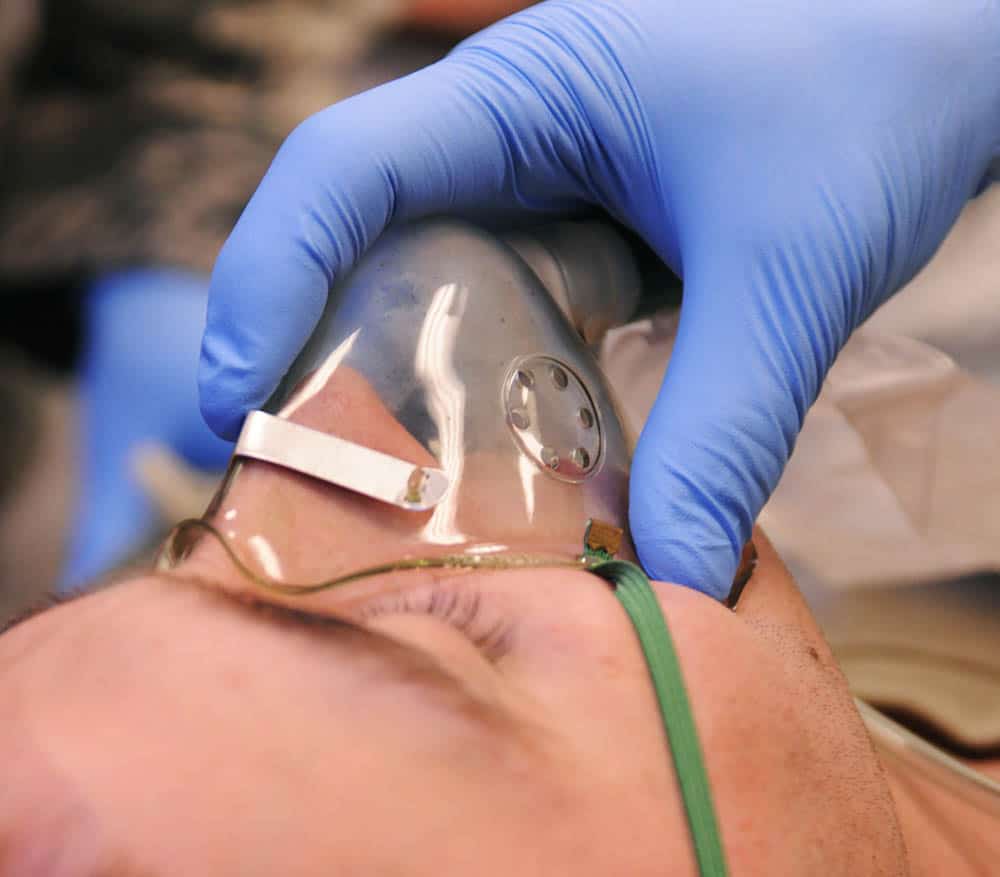Oxygen therapy could help tackle dementia in patients with lung disease

New research has found that breathing in additional oxygen improves the function of blood vessels in the brain of people with breathing difficulties caused by lung conditions, which could help future research aiming to prevent the development of diseases affecting the brain, such as dementia.
Published in Experimental Physiology, the research aimed to establish the effect of supplying additional oxygen on both blood flow to the brain and blood vessel function in chronic obstructive pulmonary disease (COPD) patients.
COPD is the collective term for a group of lung conditions that cause long-term breathing difficulties. It is a common condition affecting mainly middle-aged or older adults who smoke, with symptoms including breathlessness and a chesty cough.
Individuals with COPD are at higher risk of dementia, with one theory suggesting that this is due to lower brain oxygen levels as a result of problems with blood supply from blood vessels in the brain. In line with this theory, some studies have reported that giving COPD patients additional oxygen reduced their risk of developing dementia.
However, until now, the mechanisms underlying this positive effect had not been fully investigated.
The researchers used ultrasound to view and measure blood flow in the brain in these patients at rest, before and during delivery of additional oxygen – which was delivered through the nasal passage for 20-30 minutes.
In addition to testing blood flow in the brain, the authors tested the link between brain activity and blood flow in the brain. Participants began this test with their eyes shut, having to open them and then read standardised text; a task which was designed to increase activity in the brain, and, as a result, brain blood flow was expected to increase to provide adequate oxygen supply.
Ultrasound was used to measure the extent to which brain blood flow increased. Pairing these ultrasound measures with a measurement of blood oxygen levels allowed the authors to estimate how much oxygen delivery to the brain increased during the eyes open reading test.
The research team found that blood flow and oxygen delivery to the brain was significantly increased during reading due to blood vessels in the brain becoming dilated in response to the greater oxygen demand when the brain was active.
The researchers therefore concluded that when COPD patients receive additional oxygen, it improves the function of blood vessels in their brain. This study also showed that providing extra oxygen improves the function of blood vessels in the brain by matching blood supply to the demands of the brain activity.
However, COPD patients typically use this extra oxygen therapy throughout the day and for long periods of time, potentially years. The study does not indicate the influence of long-term oxygen therapy on the function of blood vessels in the brain.
Despite these potential limitations, this work has set a precedent for researchers to investigate the biological systems that control oxygen delivery to the brain.
Lead Author Ryan Hoiland, commented: “I am typically used to working with young, healthy individuals, and so this study in patients with lung disease was an eye-opening experience.
“I learned more about where I want to take my research career in the future, and how I want to design my research to hopefully improve treatments for people with breathing difficulties.”
Experimental Physiology publishes advances in physiology which increase our understanding of how our bodies function in health and disease.

